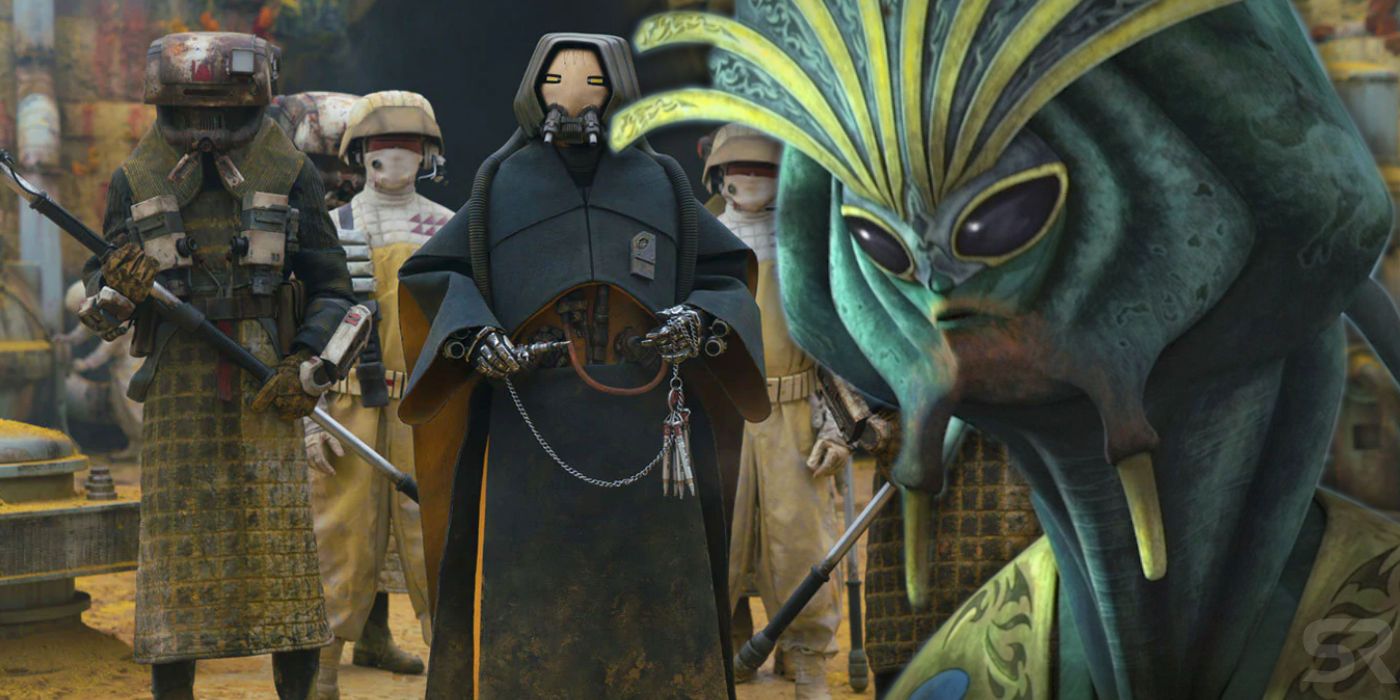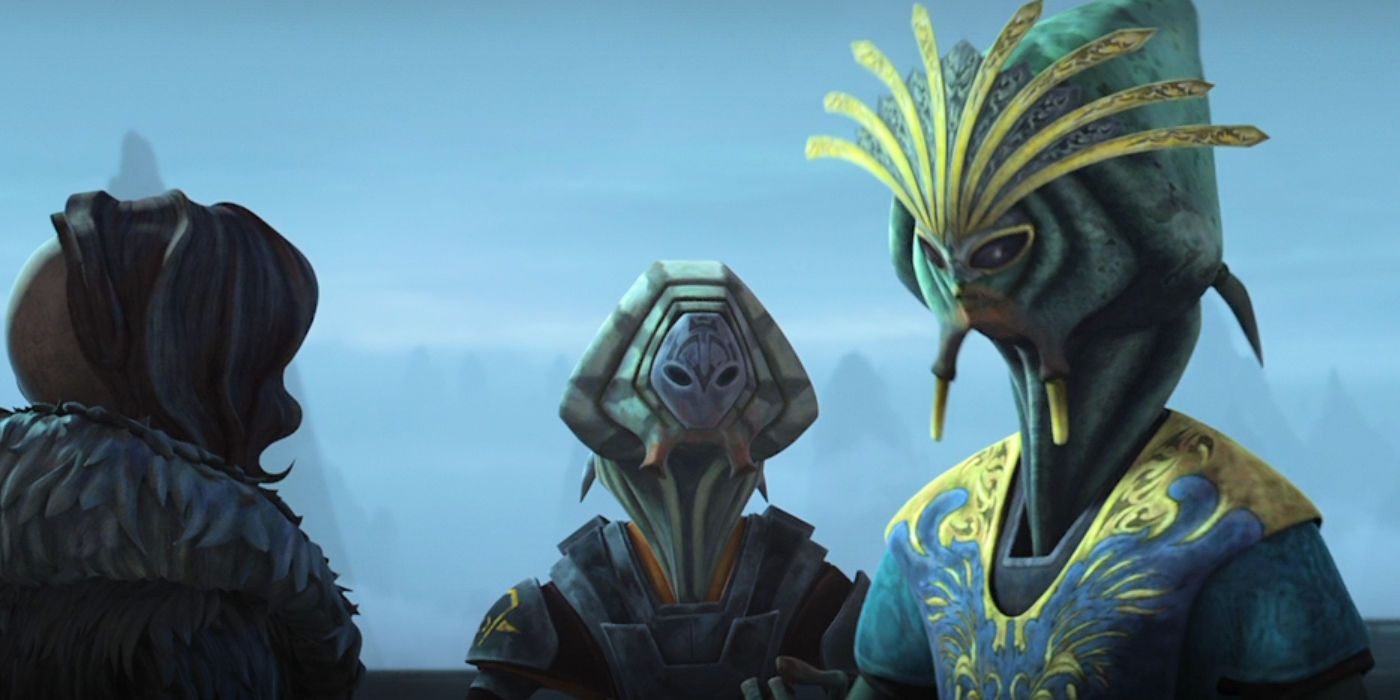
The Pykes in Star Wars: The Clone Wars season 7, episode 6 look very different than the ones in Solo: A Star Wars Story. Clone Wars season 7, episode 6, "Deal No Deal" revolves around Rafa Martez going on a suspicious job with her sister, Trace, and Ahsoka Tano. Their assignment is to run spice from Kessel and deliver it to the villainous Pyke syndicate. A notable feature of the criminal group is that their physiology have been altered to some extent, and when comparing this version to how they looked in Solo: A Star Wars Story, they are almost a different species. No explanation is given, but there are plenty of justifications for the change.
The Pykes aren't new to the Clone Wars series; they first appeared way back in season 5. At the time, they allied themselves with Darth Maul and his Mandalorians under the Shadow Collective faction. And while they rarely appear in the spotlight, they're instantly recognizable, physically; they're characterized by their large, angular heads with small faces. Their almond-shaped eyes are one of the most prevalent feature, as well as their three-fingered hands. Furthermore, their clothing was colorful and showed off their thin, elongated body composition. But while Clone Wars season 7's take on the Pykes remains consistent with what the show has had before, they're very different to the versions seen in Solo: A Star Wars Story.
Prior to making the famous Kessel Run, Han Solo and his allies met with the Pykes, as they needed to use their refineries for Dryden Vos' coaxium. The representative for the organization, Quay Tolsite, was virtually unrecognizable as a member of the Pykes, seeing as he was depicted as much shorter and wearing a helmet with other protective gear. In turn, his face and body were concealed, as well as covered by drab colors, not to mention the size of his head was much closer to that of a human. He didn't resemble the Pykes from Clone Wars at all. Gone were the vibrant colors and lanky proportions, replaced by baggy clothes and masks. Of course, since one was animation and the other live-action, there are several reasons as to why this change took place.

For one, a lot of details are changed in moving from animation to live-action. The obvious thing is that the lanky proportions seen in animation can't be translated into live-action due to humans simply not being proportioned that way. Furthermore, alien designs tend to be more eccentric in animation; animated series and films are always able to greatly exaggerate characteristics and movements, while live-action shows and movies can't do that. Because of that, it's understandable that bits and pieces would've been toned down in Solo: A Star Wars Story.
What's interesting is that the helmet Quay wears in Solo: A Star Wars Story isn't at all like the ones seen in Clone Wars. That's something that could've easily been adapted onto the big screen, so changing it was an active decision by the designers. It's possible that the Pykes use different helmets in different environments; it wouldn't be far-fetched, as other species, including humans, change their equipment based on the planet they're on. Overall, the Pykes may not be as recognizable as Wookiees or Jawas, but their design is intriguing nonetheless. They are visually interesting, more so than the popular Clone Wars characters who rarely change clothing. The big question is why do they vary in physiology in their portrayals? In the end, the differences can be chalked up to biology.
from ScreenRant - Feed https://ift.tt/34e6fXX


0 Comments